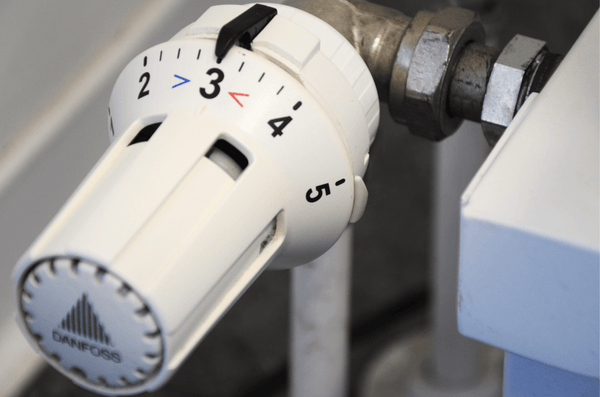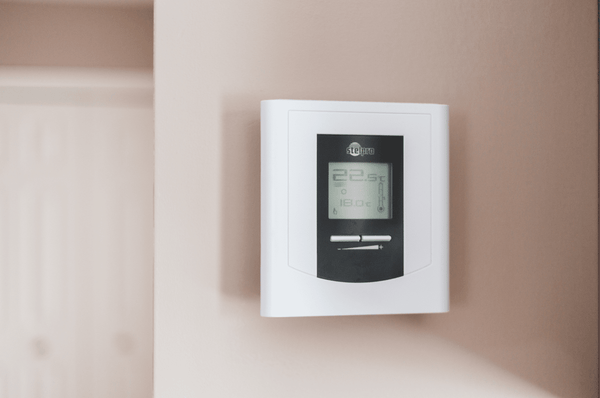Introduction to Thermostatic Expansion Valves (TXVs)
What is a TXV?
Imagine a gatekeeper that controls the flow of life's essence into a realm where balance and efficiency dictate the laws of existence. In the world of HVAC systems, this gatekeeper is known as the Thermostatic Expansion Valve (TXV). It's not just a component; it's the heart of refrigeration, pulsating with precision to regulate the flow of refrigerant into the evaporator. This valve ensures that the refrigerant is metered accurately according to the cooling demand, optimizing the system's performance and safeguarding it against inefficiencies and potential damages.

Importance in HVAC Systems
The significance of TXVs in HVAC systems cannot be overstated. They are the maestros conducting the symphony of refrigeration, ensuring each note of temperature and pressure is in perfect harmony. Without TXVs, systems would struggle to adapt to the dynamic demands of cooling, leading to wasted energy, increased wear on components, and uncomfortable indoor environments. Their ability to adjust the refrigerant flow dynamically makes them indispensable in achieving optimal efficiency and prolonging the lifespan of HVAC units.
The Anatomy of a TXV
Core Components
Diving deeper into the anatomy of a TXV reveals a marvel of engineering, comprising several critical components. The valve body, the fortress that houses the mechanism; the diaphragm, a flexible membrane that responds to pressure changes; the needle or pin, paired with a seat to control the passage of refrigerant; the spring, which provides the necessary counterforce; and the sensing bulb and capillary tube, the sensory organs that detect temperature changes and command the valve to act. Together, these components form a cohesive unit that responds with agility to the ever-changing demands of the refrigeration cycle.
How It Works
The TXV's operation is a ballet of physics, responding to the ebb and flow of cooling needs. At its core, the TXV modulates the refrigerant's journey, allowing it to expand and cool before entering the evaporator. This process is governed by the delicate balance between the pressure exerted by the refrigerant in the sensing bulb and the opposing force of the spring. As the cooling load increases, the temperature at the evaporator's outlet rises, causing the refrigerant within the sensing bulb to expand. This expansion pushes the diaphragm, opening the valve further to admit more refrigerant. Conversely, when the demand decreases, the valve constricts, maintaining the system's efficiency and preventing the overcooling that can lead to energy waste and system damage.
The Role of TXVs in Refrigeration Cycles
Controlling Refrigerant Flow
At the heart of the refrigeration cycle, the TXV serves as the guardian of efficiency. By precisely controlling the amount of refrigerant that enters the evaporator, it ensures that the system can meet the cooling demand without overburdening the compressor or wasting energy. This control is vital for maintaining the delicate balance required for the refrigeration cycle to function effectively, allowing the system to adapt seamlessly to varying thermal loads.
Enhancing System Efficiency
The efficiency of an HVAC system is significantly influenced by the performance of its TXV. By ensuring that the evaporator receives the exact amount of refrigerant it needs, the TXV helps to maximize heat absorption from the indoor air, reducing the workload on the compressor and minimizing energy consumption. This not only leads to lower operational costs but also contributes to the sustainability of the system by reducing its environmental impact.
Installation and Location
Where to Find TXVs in HVAC Systems
The strategic placement of TXVs is crucial for their performance. Typically located at the entrance of the evaporator coil, they are positioned to precisely control the refrigerant's entry into this critical component. This placement allows the TXV to respond effectively to the superheat, the key indicator of the refrigerant's readiness to absorb heat from the air passing over the evaporator.

Image by pvproductions on Freepik
Installation Best Practices
Proper installation is paramount for the TXV's optimal performance. It involves not only the correct positioning of the valve itself but also the precise attachment of the sensing bulb to the evaporator outlet. This ensures that the bulb accurately measures the superheat, allowing the TXV to adjust the refrigerant flow effectively. Technicians must follow manufacturer guidelines closely, ensuring that the TXV is securely mounted and that the capillary tube is not kinked or damaged, which could impair the valve's responsiveness.
Operational Principles of TXVs
Responding to Cooling Demand
The TXV's ability to respond to cooling demand is akin to a thermostat's role in regulating indoor temperature. By adjusting the refrigerant flow, the TXV ensures that the evaporator can efficiently absorb heat from the indoor air, regardless of fluctuations in the thermal load. This responsiveness is crucial for maintaining comfortable indoor temperatures and preventing the inefficiencies that can arise from overcooling or undercooling.
The Process of Superheat Adjustment
Superheat adjustment is at the core of the TXV's function. This process involves fine-tuning the amount of refrigerant entering the evaporator to ensure that it is fully vaporized before it exits, preventing any liquid refrigerant from reaching the compressor. The TXV's ability to adjust the superheat ensures that the system operates efficiently, protecting the compressor from damage and optimizing the system's performance.
The Impact of TXVs on System Performance
Efficiency and Energy Consumption
The role of TXVs in enhancing system efficiency cannot be understated. By optimizing the refrigerant flow, they ensure that the system operates at peak efficiency, reducing energy consumption and operational costs. This efficiency is crucial for both the economic and environmental sustainability of HVAC systems, making TXVs a key component in the push towards greener, more energy-efficient buildings.
Preventing Compressor Damage
One of the most critical functions of TXVs is their role in preventing compressor damage. By ensuring that only vaporized refrigerant enters the compressor, they protect this vital component from the damaging effects of liquid refrigerant, known as floodback. This protection is essential for maintaining the system's reliability and longevity, preventing costly repairs and downtime.
Troubleshooting and Maintenance
Common TXV Issues
Despite their precision and reliability, TXVs can encounter issues such as sticking, clogging, or improper adjustments. These problems can lead to inefficiencies, reduced cooling capacity, or even system failure if not addressed promptly. Recognizing the signs of TXV malfunction is crucial for maintaining system performance and preventing more significant issues.
Maintenance Tips
Regular maintenance is essential for the continued efficient operation of TXVs. This includes cleaning the valve, checking for leaks, and ensuring that the sensing bulb is properly attached and functioning. Regular checks can help identify potential issues before they become serious problems, ensuring that the TXV continues to regulate the refrigerant flow accurately and efficiently.
The Future of TXVs in HVAC Technology
Innovations and Improvements
The HVAC industry is continually evolving, with innovations in TXV technology leading the way towards more efficient, reliable, and adaptable systems. Newer models of TXVs offer improved performance across a wider range of conditions, ensuring that HVAC systems can meet the demands of modern buildings more effectively.
The Shift Towards Smart Systems
The future of TXVs lies in their integration into smart HVAC systems. With advances in sensor technology and control algorithms, TXVs will be able to adjust the refrigerant flow with even greater precision, responding in real-time to changes in cooling demand and environmental conditions. This shift towards smarter systems promises to enhance efficiency, reduce energy consumption, and improve indoor comfort levels, marking a new era in HVAC technology.

Conclusion
Thermostatic expansion valves are a cornerstone of modern HVAC systems, playing a critical role in ensuring efficiency, reliability, and comfort. Their ability to precisely control the flow of refrigerant makes them indispensable in the quest for more sustainable and cost-effective cooling solutions. As technology advances, the evolution of TXVs will continue to drive improvements in HVAC systems, promising a future where indoor environments are more comfortable, energy-efficient, and environmentally friendly.
FAQs
What is superheat, and why is it important?
Superheat refers to the temperature of refrigerant vapor above its boiling point at a given pressure. It's crucial for ensuring that the refrigerant is fully vaporized before it enters the compressor, preventing liquid refrigerant from causing damage and ensuring efficient heat absorption in the evaporator.
How do I know if a TXV is malfunctioning?
Signs of a malfunctioning TXV include fluctuating temperatures, ice formation on the evaporator coil, or unusual noises from the compressor. Regular system checks can help identify these issues early, allowing for timely repairs or adjustments.
Can a TXV improve my HVAC system's efficiency?
Yes, a properly functioning TXV can significantly improve the efficiency of an HVAC system by optimizing refrigerant flow and ensuring the system operates under ideal conditions. This leads to lower energy consumption and reduced operational costs.
How often should a TXV be serviced?
The servicing frequency for a TXV depends on the system's usage and environment. However, annual inspections are recommended to ensure optimal performance and identify any potential issues. Regular maintenance can extend the life of the TXV and the HVAC system as a whole.
Are TXVs compatible with all types of refrigerants?
Modern TXVs are designed to be compatible with a wide range of refrigerants. However, it's essential to select a valve that matches the specific refrigerant type and requirements of your HVAC system to ensure optimal performance and efficiency.





